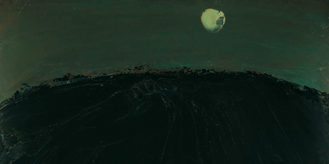
Congdon went through a difficult period following his conversion. The community that had welcomed him with love on the threshold of self-destruction did not spare him from conflicts and trials with which he managed to deal thanks to his friendship with Paolo Mangini, whom he had met in Assisi.
Looking for a new community in which to feel welcome and valued, Congdon followed Mangini to Milan, where both became long-term members of Don Giussani’s movement. In that period a living and meditation centre came into being in the abandoned monastery of Saint Lawrence, near the top of the Aniene valley. Congdon spent his summers there for many years, working in contact with the younger communities, despite his psychological difficulties and his innate resistances to living in a communal context. Over the years, Assisi and Subiaco proved to be a fertile source of inspiration for his painting. It was here, exhausted by his long religious phase, that he went back to landscape painting.
In Assisi he mainly painted the houses and the changes in the weather - rain, snow, fog, storms; in Subiaco it was the hills, the anatomy of their vast mass pouring down into the valley, and the summer moons.In his new state of isolation, Congdon returned to the themes of his past painting. The years 1966-1979 were a period of great creativity. Congdon went back to India after a gap of twenty years, but this time he did not allow himself to be seduced by its exoticism. The India of his new paintings was made of asphalt roads, stations, metal structures and the terrible poverty of its people.